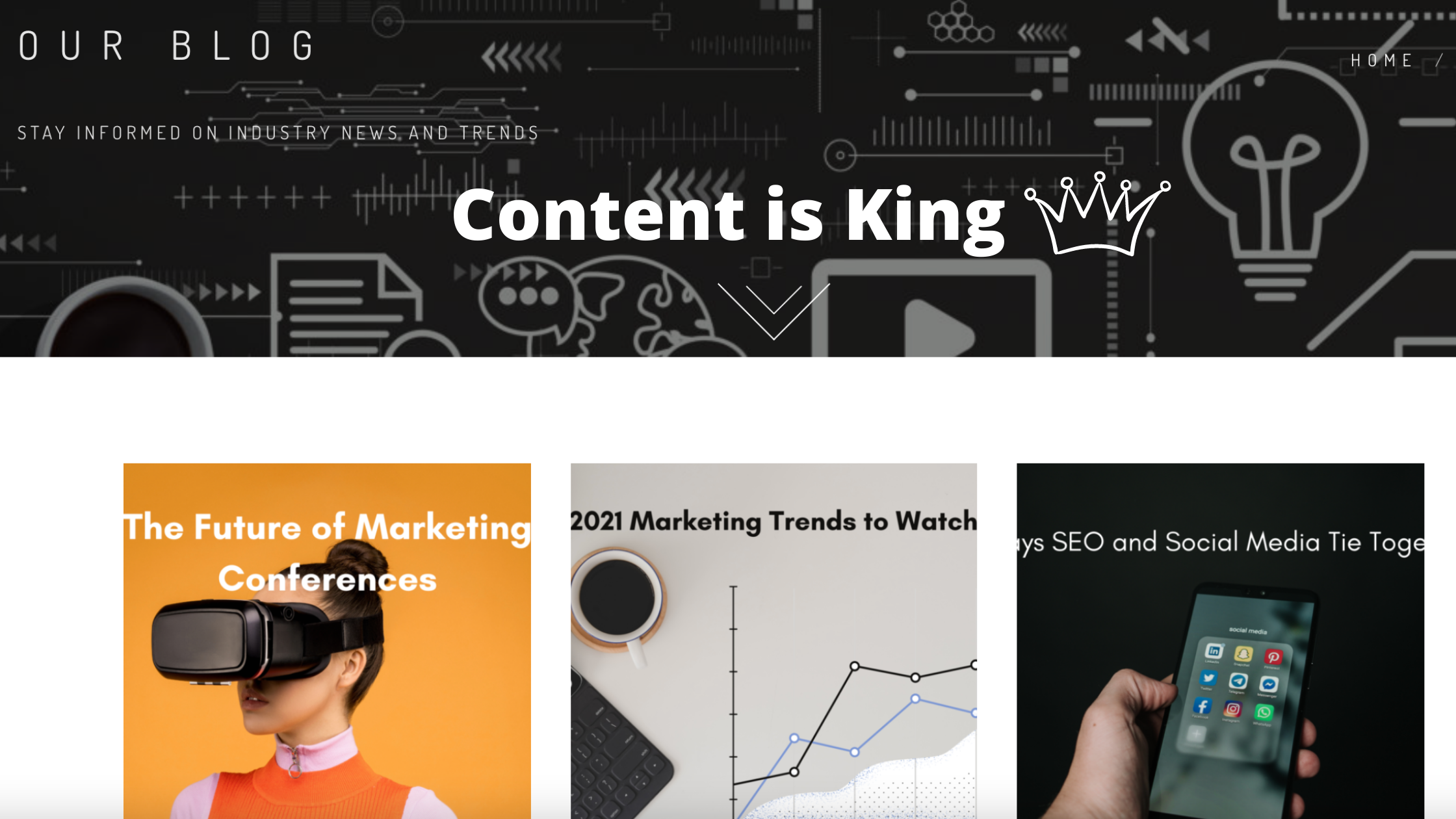How to Create Quality Content for Your Target Audience
Whether you’re looking to optimize your content for your SEO strategy or start creating quality content that becomes an asset for your business, it’s a crucial part of your marketing strategy.
Those that have yet to implement a quality content creation strategy typically push it off for one sole reason; It takes a lot of time and effort. However those that stick to the continuous creation and optimization of quality content reap the benefits of:
- High audience engagement within their online presence (social and website)
- Assets that can be used as referenced points while trying to convert prospects into paying customers
According to Neil Patel, only 9% of marketers rate their content marketing as ‘effective’.
This post is going to discuss how to start creating quality content in order to reap the two benefits mentioned above and ensure that you don’t fall in the category of an ineffective content strategy.
Steps to Creating Quality Content
- Understand your target audience
To create quality content for your target audience, you must first identify who your target audience is. Seems like a simple task, but over and over again companies fail to truly understand who it is they’re targeting and which audience they provide the most value to.
- Identify topics that your target audience is searching for
Leverage a keyword research and competitor analysis tool to identify topics/questions that you can build content ideas around. Your goal here is to inform your audience and easily show how your solution makes their life easier.
- Seek to inform your target audience across multiple marketing channels
Too often, B2B sales and marketing teams create content that is ‘selling’ their value. “Buy our product and see results in X amount of time”.
Quality content doesn’t sell, it informs.
In this era, your target audience can, and most likely will, perform their own research and know whether or not they want to buy your product before they ever talk to your sales team.
We’ll call this working their way down the sales funnel, without the sales.
Getting Started
Now that you have an understanding of who you’re targeting, topics you’ll be discussing, and how to inform your audience, it’s time to actually start executing on quality content creation.
Structure your content in a way that immediately makes your topic clear, and then seeks to inform and validate throughout the remainder of the topic.
Here’s what we mean.
The Ultimate Content Structure
Whether it be a blog post, podcast, or a video, structuring all of your content in a similar fashion to below will set you up for success.
Intriguing Title
Examples:
- 5 Ways to Build Better Habits
- What You Need to Know About Selling Coffee
- How Dwayne Johnson Stays in Shape All Year
Takeaway: should create interest/mystery before reading anything else
*You’ll often see news outlets post headlines along the lines of “these are the sheets that Barack Obama sleeps on”. Normally, you wouldn’t care, but the way it’s structured makes you click it anyway to find out.
Introduction to The Content
The Challenge:
– Immediately bounce off of the title and introduce the topic at hand.
– Show that you understand the pain point in a way that makes it seem like you’re speaking to your audience one-on-one.
The Solution:
What will the content discuss that fills in the gap for what the reader is looking for?
Your audience is consuming your content to be informed or entertained, spell out how you’re going to take them down one of those two paths.
Introduction Summary:
This portion acts as a reminder to everything the content is going to touch on.
Break each solution/topic down into bullet points and clearly spell out that that is what this discussion will take them through.
- Topic 1
- Topic 2
- Topic 3
The Body of the Content
Topic 1
– Overview of topic
– Real-life use case/example
– Backed by statistical data/external resources/quotes from other people
*quotes from other sources allow you to engage them so that they’re more willing to share your content.
Topic 2
– Overview of topic
– Real-life use case/example
– Backed by statistical data/external resources
Topic 3
– Overview of topic
– Real-life use case/example
– Backed by statistical data/external resources
Closing Out/Conclusion
– Quick recap of challenge at hand
– Quick recap of the solutions
– Show a clear path forward (you often hear about call-to-actions here)
Examples:
Here’s a link my e-book to start building sustainable habits
Schedule a consultation so we can walk through your goals and getting them accomplished ASAP
Quality Content That Engages Your Audience
Regardless of the platform you’re building your content on, it’s never truly complete and will need to be continuously optimized to further drive engagement.
You’ll need to:
- Analyze the data behind it (follows, search engine results, likes, comments, form submissions, etc.)
- Determine which forms of content perform the best based on above
- Optimize old content for better results
- Build new content that corresponds to your best performing quality content
You’ll often create content that you predict will be a ‘winner’ when it goes live; Your target audience will remind you that that’s not always the case.
On the contrary, content that you don’t expect to perform that well can often be your biggest winner.
In short, your audience (the market) doesn’t lie and will give you all of the data you need in order to create quality content that provides them value.
Create content that your audience wants to digest and engage with.
Content That Becomes an Asset for Your Business
Prospective customers will come to you via organic reach (search, word-of-mouth, referrals), or outbound prospecting (email, telesales, good old fashioned sales).
If your customers come to you organically, chances are they’ve already looked you up online and have reviewed the content that you’ve put out there. In turn, your content is acting as an asset that prospects are using to validate your business practices and value-add.
If you’re finding your customers via outbound prospecting efforts, they’ll have many questions as to who you are, what you do, and the value your company provides. In this scenario, organizations that have deployed a high quality content creation strategy will have an arsenal of assets (content) to show prospects.
Regardless of the method that you acquire prospects (and hopefully customers), having high quality content to show them will be the first asset of your business that they look for in order to validate your offering and value provided.
The Best Time To Start Creating Content
Yesterday. But if you didn’t start yesterday, then today will do. Content takes time to work.
Search engines need to read it. You need direct feedback from your audience. Optimizations need to be made in order to better serve that audience.
Start creating quality content that informs users, remain consistent, and continue to optimize that content over time.
It will pay dividends for your business and you’ll be happy you started.
Let us know how you’re creating content or if you need help getting started.

Gary McConnell Co-founded Rubicom Digital in 2019 with a goal of providing digital marketing consulting services in the B2B space.
Gary continues to serve as the Marketing Director of a Data Center-focused IT Provider, VirtuIT Systems.

